After casting off the lines in Vila Real de Santo António, we left behind three years in Portugal and headed towards Spain and the Mediterranean Sea. Our first port of call was Cadiz.
One of the hottest topics among sailors this summer has been the killer whales that attack boats. The orcas have been seen mostly between the Gulf of Cadiz and the Strait of Gibraltar. They may come to push the boat and have bitten off the rudders of a few boats, causing even the sinking of a vessel. The website orcaiberica.org collects sightings of orcas’ movements and provides good safety instructions for boats that are close to orcas. However, in all fairness it’s unclear if any remedy helps during the encounter. Most successful de-escalations involve motoring slowly backwards away from orcas if possible.
Andrus had been tracking boats with AIS on Marinetraffic for several days, wondering which boats had crossed over the sea due to the orcas. Orcas have attacked fewer boats closer to the coast. Shall we keep it close to the shore or sail across the sea directly to Cadiz? During the last week, all the boats had gone directly from Portugal to Cadiz, so we decided to do the same. It saves time and miles, but the risk of encountering orcas is higher.
The journey to Cadiz covered a total of 56 nautical miles. We were eager to sail, but the day was almost windless, and the wind only rose to over ten knots for a moment, so we didn’t have much opportunity to put the sails out. Most of the journey was made with the engine purring and the sun shining.
The lack of wind played an unpleasant trick on us, as in the middle of the journey, a dense, disgusting yellowish-brown smog cloud, which smelled terrible, floated over us and stayed over the sea for almost three hours. What kind of industrial plant might be there on the coast? We sorely missed the wind to freshen the air!
Otherwise, the journey went smoothly. The sun was shining, and we approached Cadiz and the Puerto America marina mile by mile.
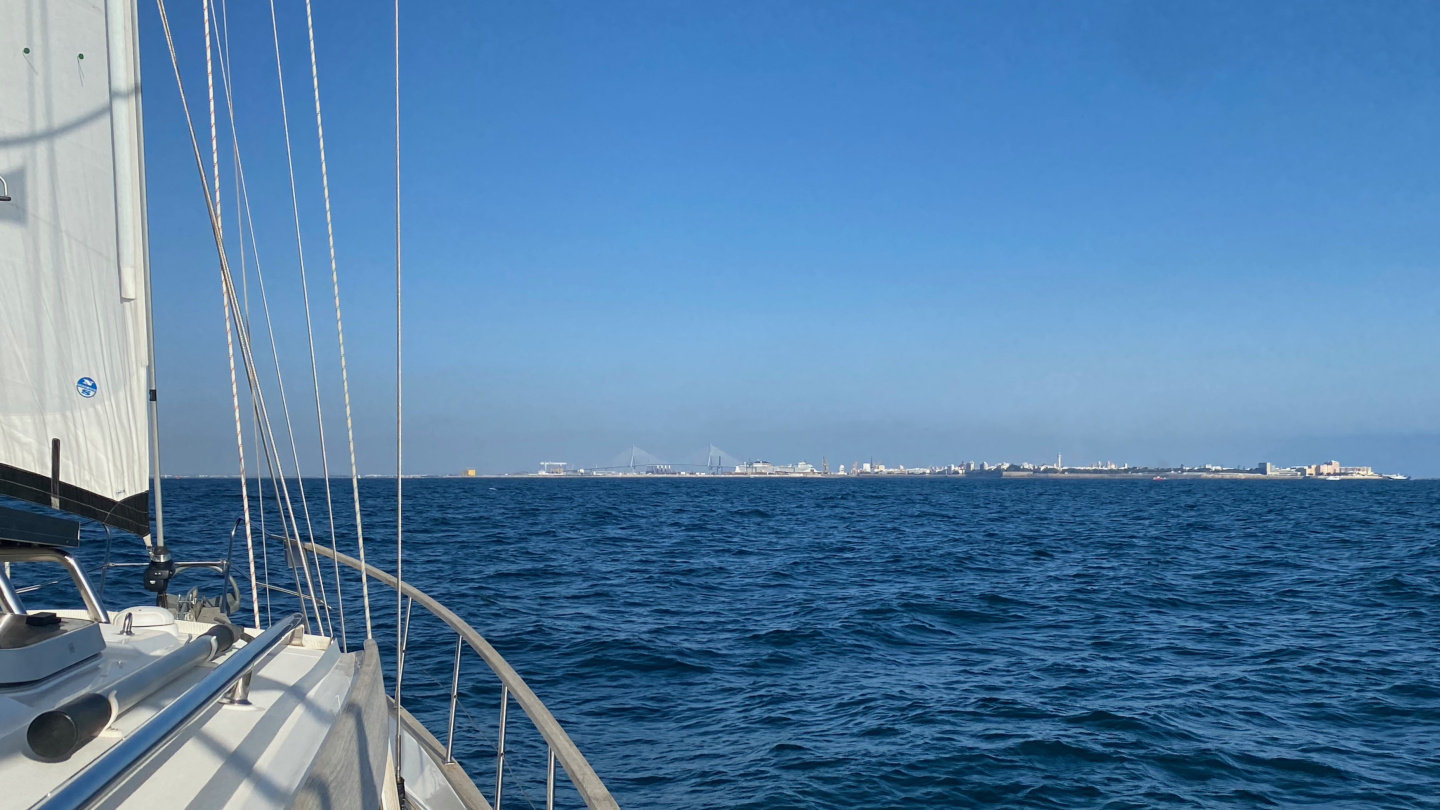
In Cadiz, we drove through the commercial harbor to reach the marina located behind it. And, of course, just as we were driving through the commercial harbor, a large cruise ship suddenly departed. After giving way to the bigger sister, we drove into the Puerto América marina and got a good berth.
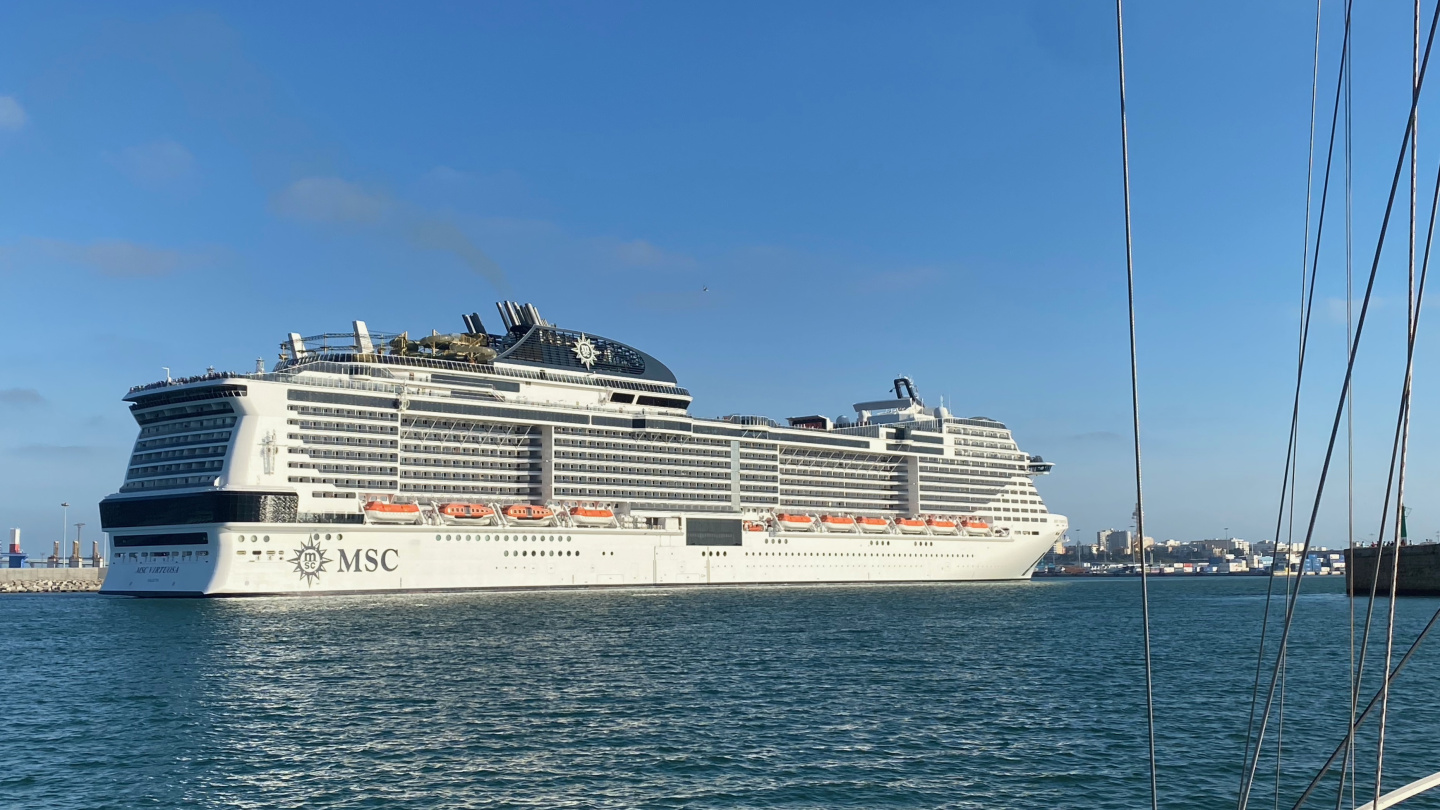
All the guides warn about the rough sea conditions in the Strait of Gibraltar, especially with an easterly wind. Most of the time, the tidal current in the Strait of Gibraltar flows from west to east towards the Mediterranean. A tidal current against the wind creates an unpleasant wave that we did not fancy sailing into.
We had been following the wind conditions for a few days and were pondering when to go to the strait. For the day after, strong easterly winds had been predicted for several days, so one option was to continue the journey before the arrival of the easterly wind, also known as the Levante. On the other hand, it would have been nice to stay in Cadiz for a couple of days to explore its historic center, which has been highly praised. As we enjoyed a late dinner in Cadiz, it was time to make up our mind. And we decided that it was best to hurry to La Linea to Suwena’s annual spot, as our return flights were already looming ahead.
Therefore, Cadiz was left unexplored this time. The distance from the port to the historic city center is almost four kilometers each way, so even an evening walk didn’t appeal, and in the morning, the journey continues again.
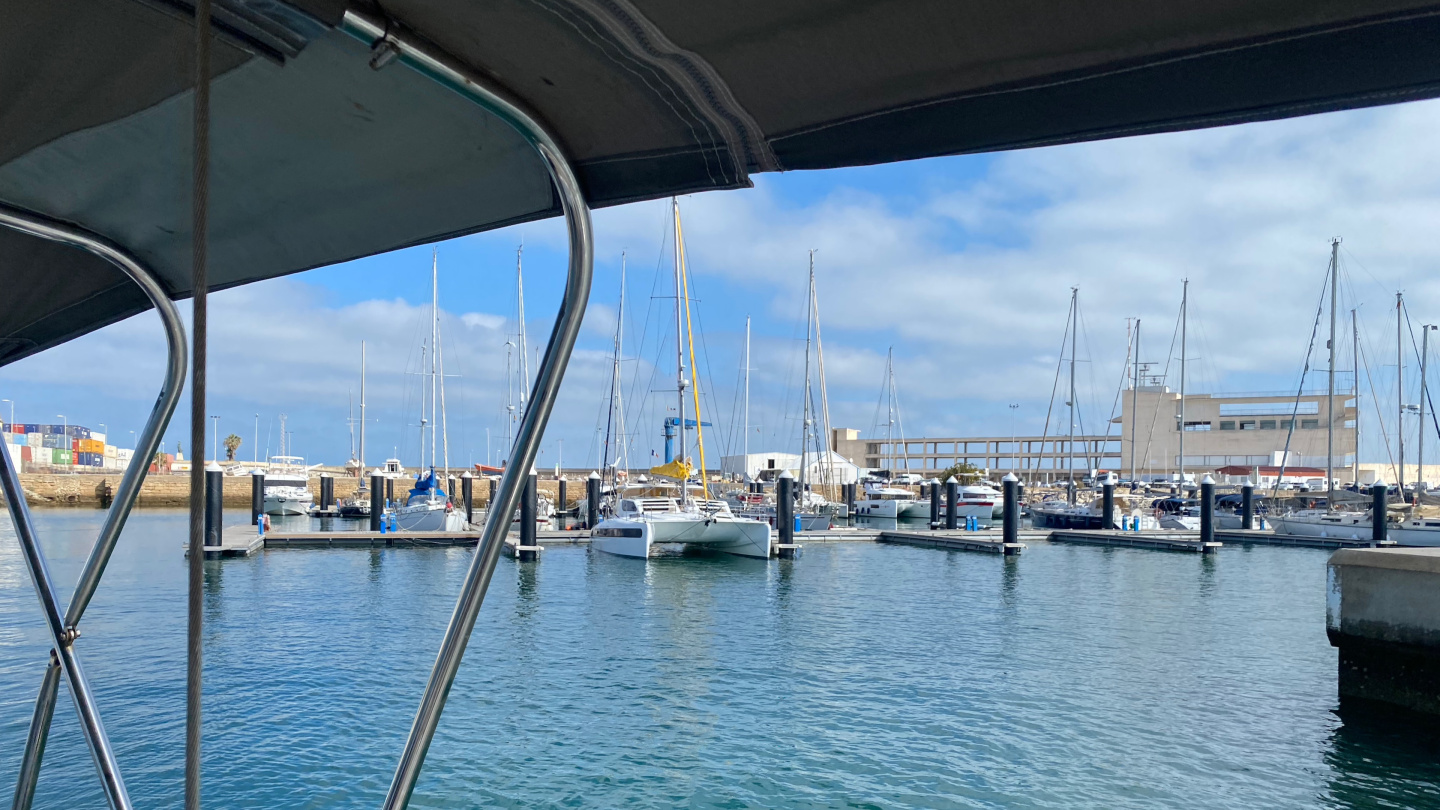
On Wednesday morning, we headed towards the Strait of Gibraltar and the Mediterranean Sea to arrive before nightfall and the approaching Levante wind. It was another windless day, so we traveled the whole 71 nautical miles using the engine.
With this leg, we added a couple of significant milestones to our logbook. It felt incredible to sail along the Strait of Gibraltar between two continents, with Africa on our right and Europe on our left. The Strait of Gibraltar is only 14 kilometers, or less than 8 nautical miles, at its narrowest, but it’s a busy shipping lane. All ships coming to the Mediterranean or leaving to the Atlantic pass through the Strait of Gibraltar.
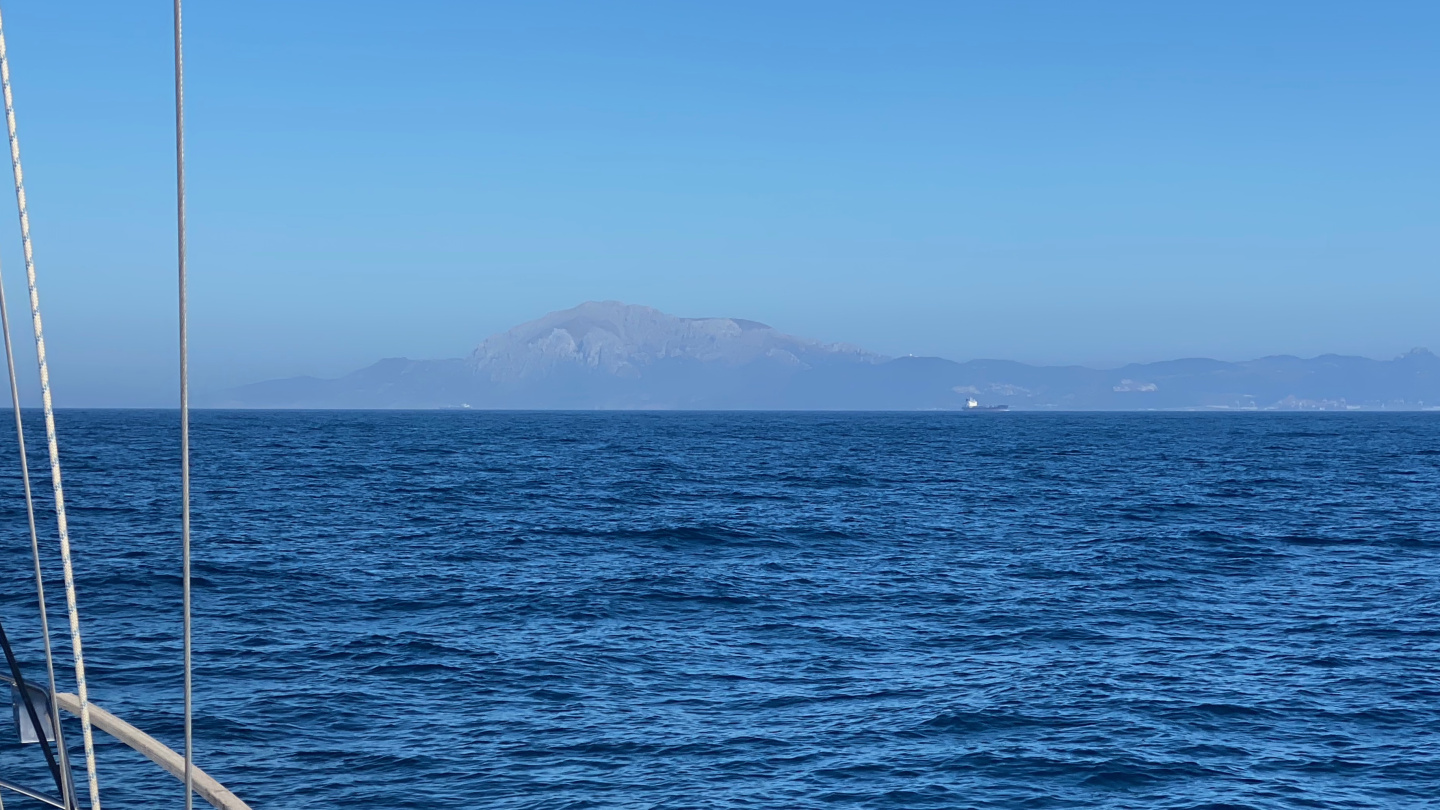
Our second milestone was undoubtedly sailing around the southernmost point of mainland Europe, the Punta de Tarifa. Suwena and We have sailed around many corners of Europe indeed.
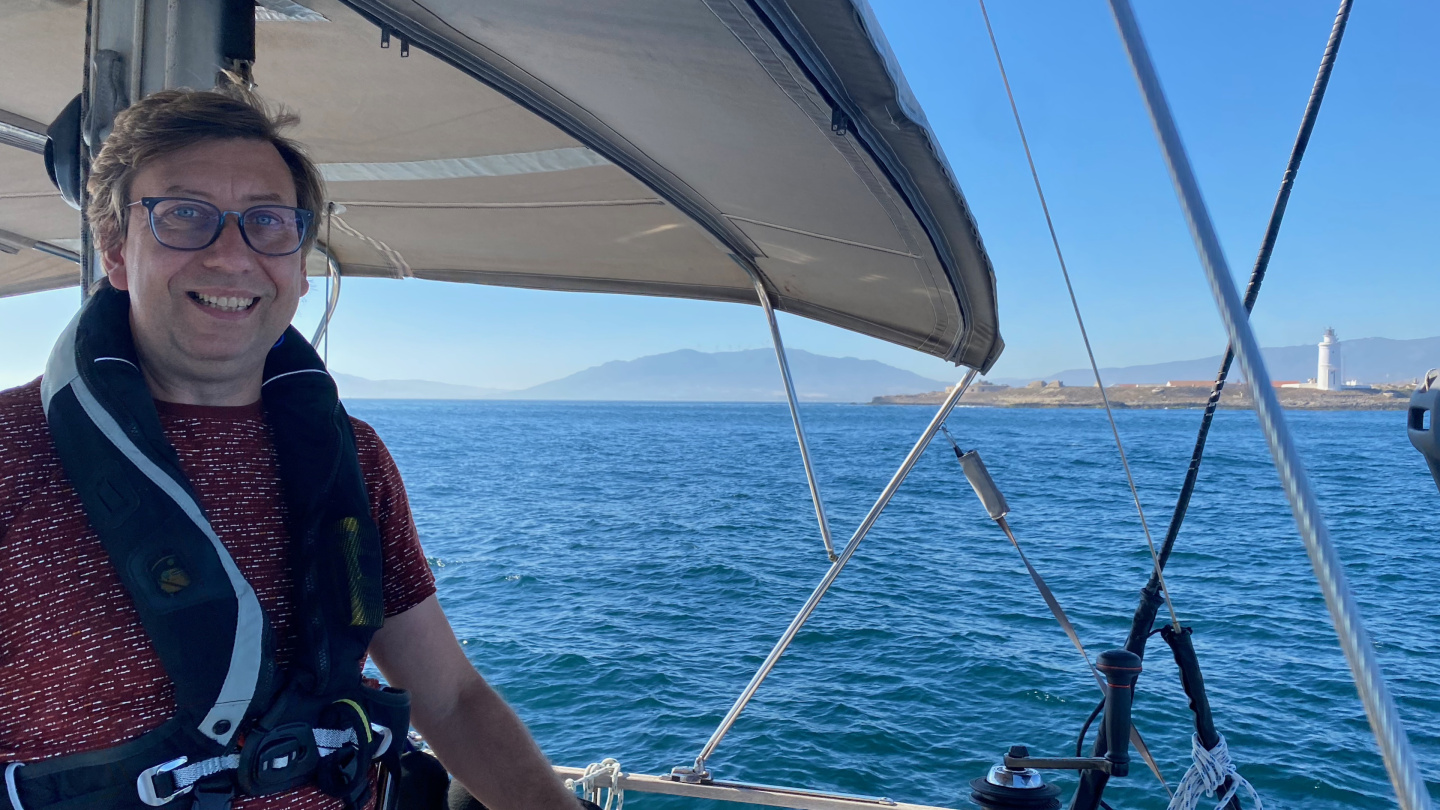
The journey through the Strait was very calm. We enjoyed the landscapes of two continents and the numerous ships and boats passing and there were no waves.
When we reached the Bay of Gibraltar, or the Bay of Algeciras in Spanish, the plotter screen was filled with all kinds of vessels. There were ships and tankers at anchor, and boats and ships crisscrossed the bay. For example, fast ferries to different African cities departed from the Algeciras passenger port and accelerated to over 25 knots amidst anchored ships. The skipper had to be careful to safely navigate between all the vessels and reach Alcaidesa Marina on the other side of the Bay of Gibraltar. Phew, there was a lot of hustle and bustle even up to the breakwater. You are not alone in this bay indeed 😊
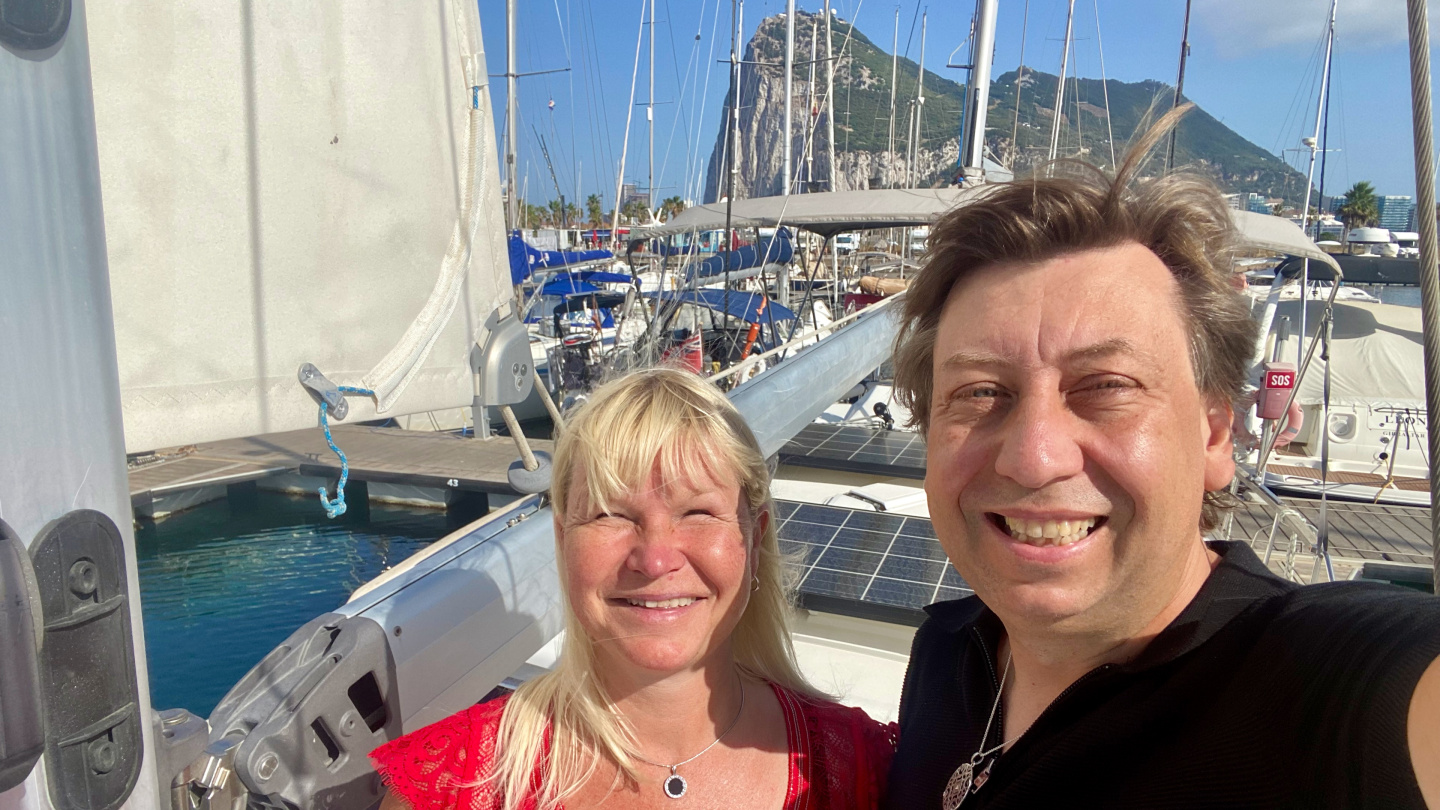


Dear Eve & Andrus,
eclectic travel description with beautiful photos. For us it is so joyful to see your journey with the scenery as it is nowadays again as we took your route more or less twenty years ago and it is amazing and shocking at the same time how that area has changed. Lagoon Alvor had at our time just a few huts and hardly a promenade. Just a few boats at anchor at that time.
Life is going on. Both of you look splendid. Good sail and save return.
Axel & Claudia
Olipas hienosti kirjoitettu ja varmasti mahtava kokemus kaikin puolin 👌🏻